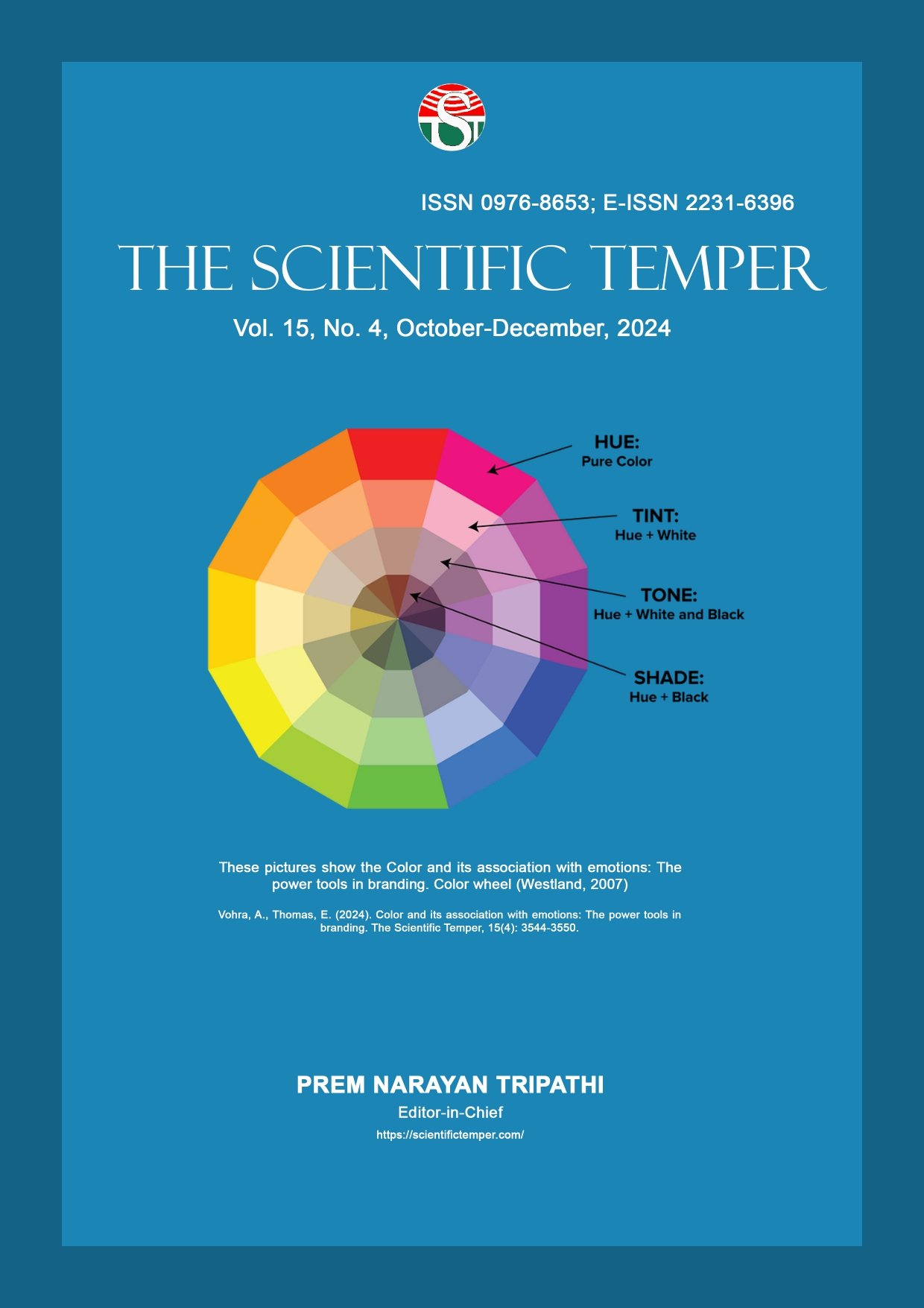Automated machine learning and neural architecture optimization
Downloads
Published
DOI:
https://doi.org/10.58414/SCIENTIFICTEMPER.2023.14.4.42Keywords:
Automated machine learning, Neural architecture optimization, Classifier accuracy, Model selection, Learning curves.Dimensions Badge
Issue
Section
License
Copyright (c) 2023 The Scientific Temper

This work is licensed under a Creative Commons Attribution-NonCommercial-ShareAlike 4.0 International License.
Automated machine learning (AutoML) and neural architecture optimization (NAO) represent pivotal components in the landscape of machine learning and artificial intelligence. This paper extensively explores these domains, aiming to delineate their significance, methodologies, cutting-edge techniques, challenges, and emerging trends. AutoML streamlines and democratizes machine learning by automating intricate procedures, such as algorithm selection and hyperparameter tuning. Conversely, NAO automates the design of neural network architectures, a critical aspect for optimizing deep learning model performance. Both domains have made substantial advancements, significantly impacting research, industry practices, and societal applications. Through a series of experiments, classifier accuracy, NAO model selection based on hidden unit count, and learning curve analysis were investigated. The results underscored the efficacy of machine learning models, the substantial impact of architectural choices on test accuracy, and the significance of selecting an optimal number of training epochs for model convergence. These findings offer valuable insights into the potential and limitations of AutoML and NAO, emphasizing the transformative potential of automation and optimization within the machine learning field. Additionally, this study highlights the imperative for further research to explore synergies between AutoML and NAO, aiming to bridge the gap between model selection, architecture design, and hyperparameter tuning. Such endeavors hold promise in opening new frontiers in automated machine learning methodologies.Abstract
How to Cite
Downloads
Similar Articles
- U. Johns Praveena, J. Merline Vinotha, The multi-objective solid transshipment problem with preservation technology under fuzzy environment , The Scientific Temper: Vol. 16 No. 01 (2025): The Scientific Temper
- A. Jabeen, A. R. M. Shanavas, Hazard regressive multipoint elitist spiral search optimization for resource efficient task scheduling in cloud computing , The Scientific Temper: Vol. 15 No. 02 (2024): The Scientific Temper
- Jonnakuti V. G. Rama Rao, Muthuvel Balasubramanian, Chaladi S. Gangabhavani, Mutyala A. Devi, Kona D. Devi, A TLBO algorithm-based optimal sizing in a standalone hybrid renewable energy system , The Scientific Temper: Vol. 14 No. 03 (2023): The Scientific Temper
- Roopesh K R, Jyothi Y, Manisha Bihani, Chandini C H, Nishanth D R, Maheshkumar Hondale, Sairashmi Samanta, Karthik G, Anu M, Neuroprotective effect of alcoholic extract of Selaginella bryopteris leaves in experimental models of epilepsy , The Scientific Temper: Vol. 15 No. 04 (2024): The Scientific Temper
- Karthik Gangadhar, Prem Kumar N, Neuroprotective activity of alcoholic extract of Operculina turpethum roots in aluminum chloride-induced Alzheimer’s disease in rats , The Scientific Temper: Vol. 15 No. 04 (2024): The Scientific Temper
- Sandip Sane, Diksha Tripathi, Nitin Ranjan, Digital transformation in management education: Bridging theory and practice , The Scientific Temper: Vol. 15 No. 04 (2024): The Scientific Temper
- Shivali Kundan, Neha Verma, Zahid Nabi, Dinesh Kumar, Satellite radiance assimilation using the 3D-var technique for the heavy rainfall over the Indian region , The Scientific Temper: Vol. 13 No. 02 (2022): The Scientific Temper
- Vijaykumar S. Kamble, Prabodh Khampariya, Amol A. Kalage, Application of optimization algorithms in the development of a real-time coordination system for overcurrent relays , The Scientific Temper: Vol. 14 No. 01 (2023): The Scientific Temper
- Shaik Chanbasha, N. Jayakumar, N. Bupesh Kumar, A self-regulating optimization algorithm for locating and sizing a local power generation source for a radial structured distribution system in deregulated environment , The Scientific Temper: Vol. 15 No. 03 (2024): The Scientific Temper
- P. J. Robinson, S. W. A. Prakash, Stochastic artificial neural network for magdm problem solving in intuitionistic fuzzy environment , The Scientific Temper: Vol. 15 No. 03 (2024): The Scientific Temper
<< < 13 14 15 16 17 18 19 20 21 22 > >>
You may also start an advanced similarity search for this article.
Most read articles by the same author(s)
- Jayaganesh Jagannathan, Dr. Agrawal Rajesh K, Dr. Neelam Labhade-Kumar, Ravi Rastogi, Manu Vasudevan Unni, K. K. Baseer, Developing interpretable models and techniques for explainable AI in decision-making , The Scientific Temper: Vol. 14 No. 04 (2023): The Scientific Temper
- Abhishek Pandey, V Ramesh, Puneet Mittal, Suruthi, Muniyandy Elangovan, G.Deepa, Exploring advancements in deep learning for natural language processing tasks , The Scientific Temper: Vol. 14 No. 04 (2023): The Scientific Temper
- Balaji V, Purnendu Bikash Acharjee, Muniyandy Elangovan, Gauri Kalnoor, Ravi Rastogi, Vishnu Patidar, Developing a semantic framework for categorizing IoT agriculture sensor data: A machine learning and web semantics approach , The Scientific Temper: Vol. 14 No. 04 (2023): The Scientific Temper



